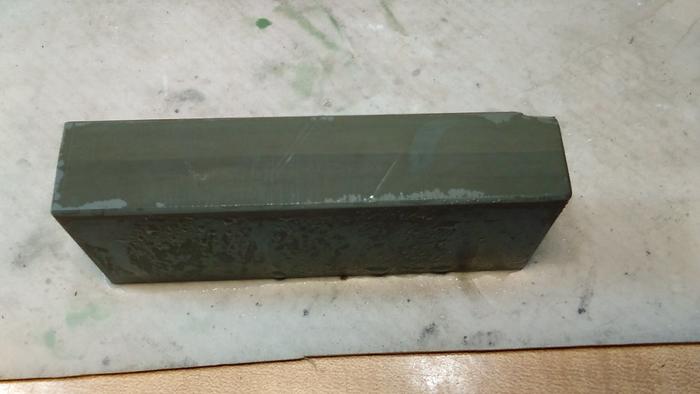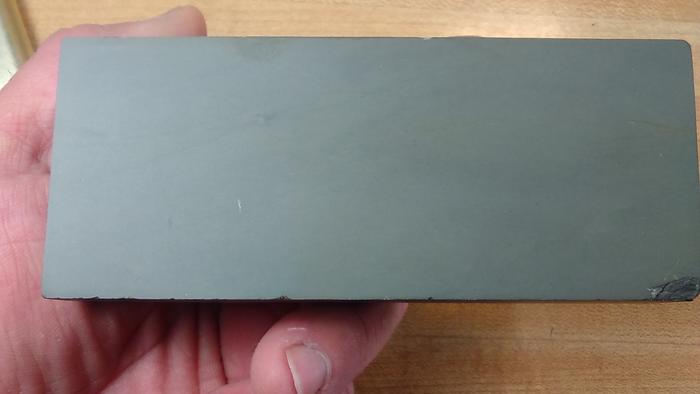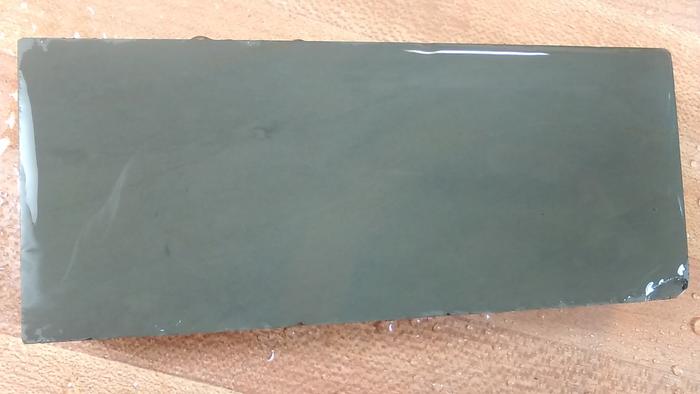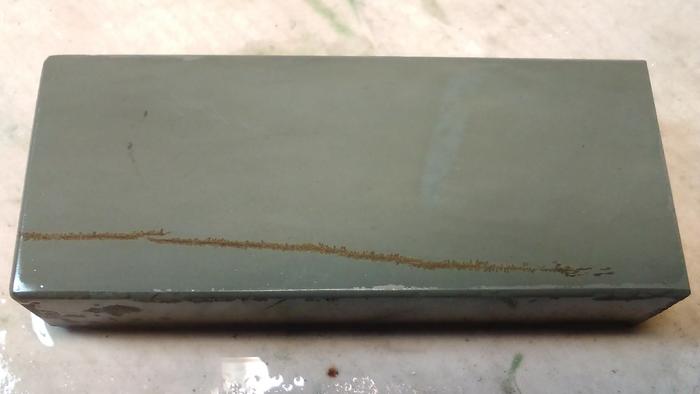Results 1 to 10 of 14
Thread: Escher Hone ID confirmation?
-
07-25-2021, 06:45 PM #1Junior Member

- Join Date
- May 2021
- Posts
- 3
Thanked: 0 Escher Hone ID confirmation?
Escher Hone ID confirmation?
Hi everyone! Iím a rookie at this but found a few hones at an estate sale including this one. Itís an Escher box and the stone fits the box but not as long as the box so I think the missing slurry stone would have completed the length of the box. No label on the stone and it is in great shape. Box isnít but stone is.
Hone dimensions are 4.5x1.2x.625.
I canít find it online anywhere with this box. I assume this is the Escher since it came in the old box, but can anyone confirm that this is an Escher hone? Thanks so much.
-
07-25-2021, 07:12 PM #2

Nice one!
I really really liked the edges my dark thuringer gave me, wish I had never parted with it
-
07-25-2021, 07:46 PM #3

I can't say its an Escher, for sure. But it is a Dark blue, Thurigan hone.
I have one similar to yours. Its in its original box, without a slurry stone.
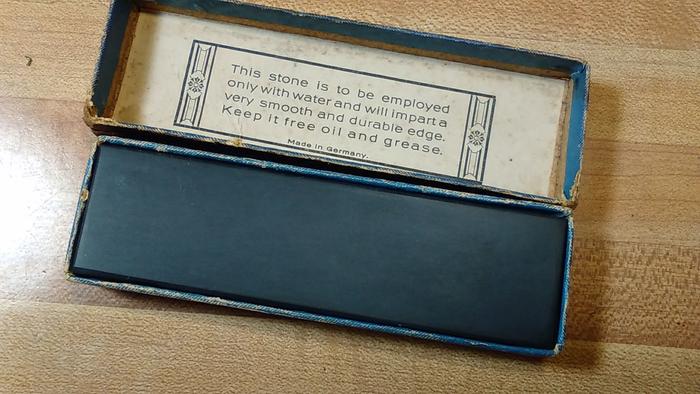 Mike
Mike
-
07-25-2021, 08:22 PM #4Junior Member

- Join Date
- May 2021
- Posts
- 3
Thanked: 0
Thanks Mike!
-
08-01-2021, 10:39 AM #5

Indeed an interesting hone and box.
The thuringians of this size 4.5 x 1.2 have been sold in former times mainly as penknife hones - not razor hones. Razor hones normally haven been 4.5 or 5 long but only 1'' wide. One explanation for this might be, that the typical length of a penkife blade was around 1''. But penknifes weren't honed with x-strokes but straight. So the hone must be a little wider than the blade length. Razors needed to be honed with x-strokes on this narrow hones anyway.
Here is an example of a penknife hone from my collection. Stone with same dimensions than yours, box with nearly the same description, fits exactly to the stone, not from the Escher company though:
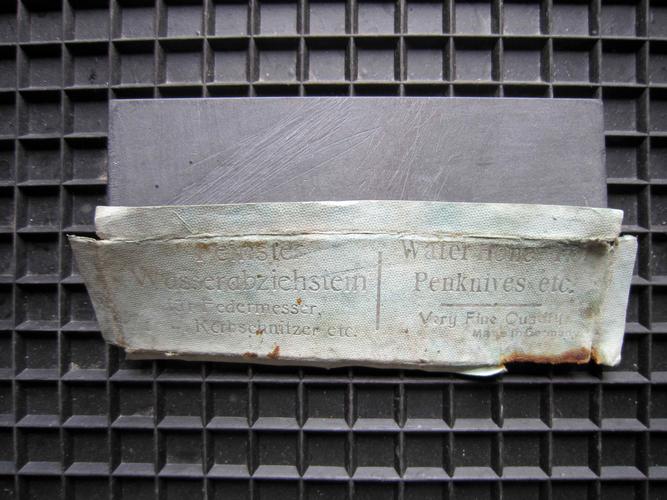
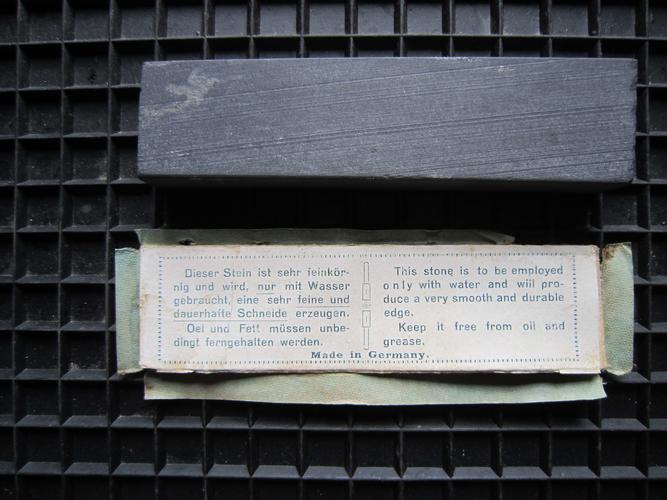
Your hone has same dimensions, but box is larger because of a slurry stone that once was included. And it was sold as razor hone as you can read on the box.
So I don't think that there is a doubt that the stone is original. Unfortunately the slurry stone is missing.
Don't think that it is really a dark blue though. Looks for me more like a blue green.
Regards Peter
-
-
08-01-2021, 02:13 PM #6

Here is my collection of Thurigan, hones.
Though, not labeled. By the information I found from a Escher site, the first one on the left would be a, blue/green barbers jem. That is from their description, dimensions, and listing of their hones.
Second is a light blue, Thurigan of unknown mine/producer
Third is dark blue, Thurigan of unknown mine/producer.
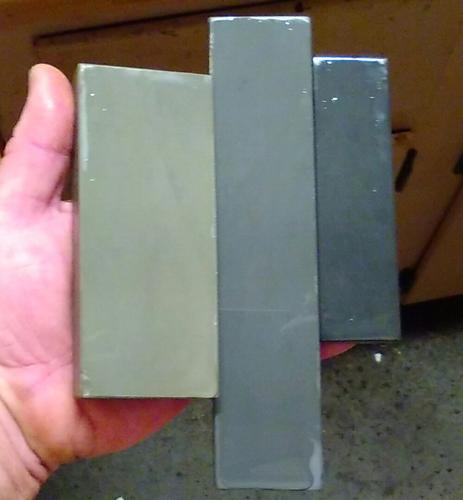 Mike
Mike
-
08-01-2021, 03:17 PM #7

Yeah that is really hard to decide Mike. It all depends on the light in which the photo was taken.
In your picture I would rate the left one as a clear yellow-green, the one in the middle is light green and the right one as blue green. But as said, in other ligth it looks different. Best is to have them in hand, then you can clearly rate them.
Regards Peter
-
The Following User Says Thank You to hatzicho For This Useful Post:
outback (08-01-2021)
-
08-01-2021, 04:58 PM #8
-
08-01-2021, 05:14 PM #9

Well yeah, that is a yellow-green to blue combination hone. One side is yellow-green, the other side blue. Sometimes part of the blue is breaking through the yellow green matrix. These stones are sedimentary.
But that is not a blue-green hone quality. A blue green is a unique color somewhat between the light green and the blue hones.
I will make some photos for comparison tomorrow and post them.
Regards Peter
-
-
08-01-2021, 09:33 PM #10


 56Likes
56Likes LinkBack URL
LinkBack URL About LinkBacks
About LinkBacks






 Reply With Quote
Reply With Quote


